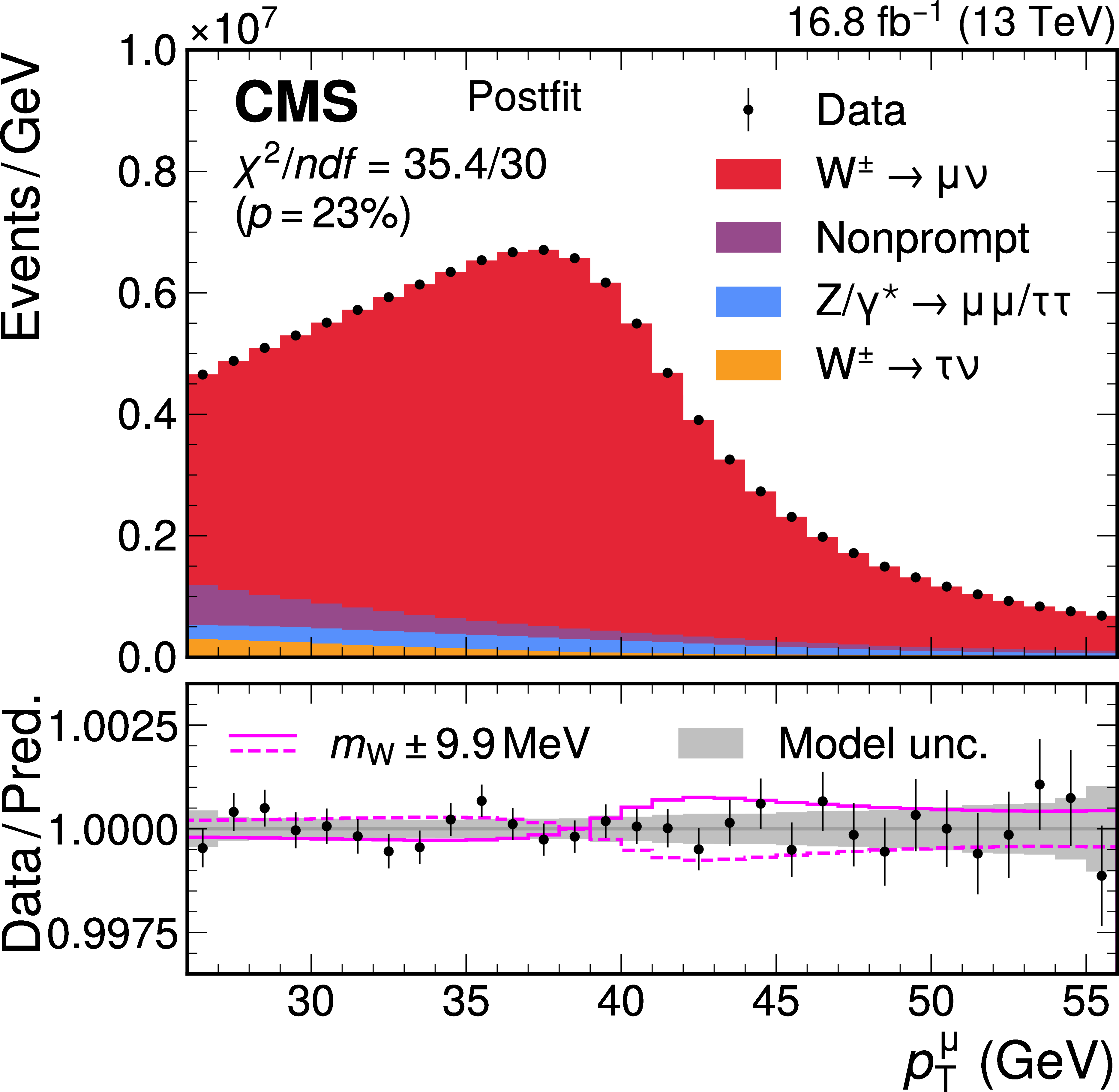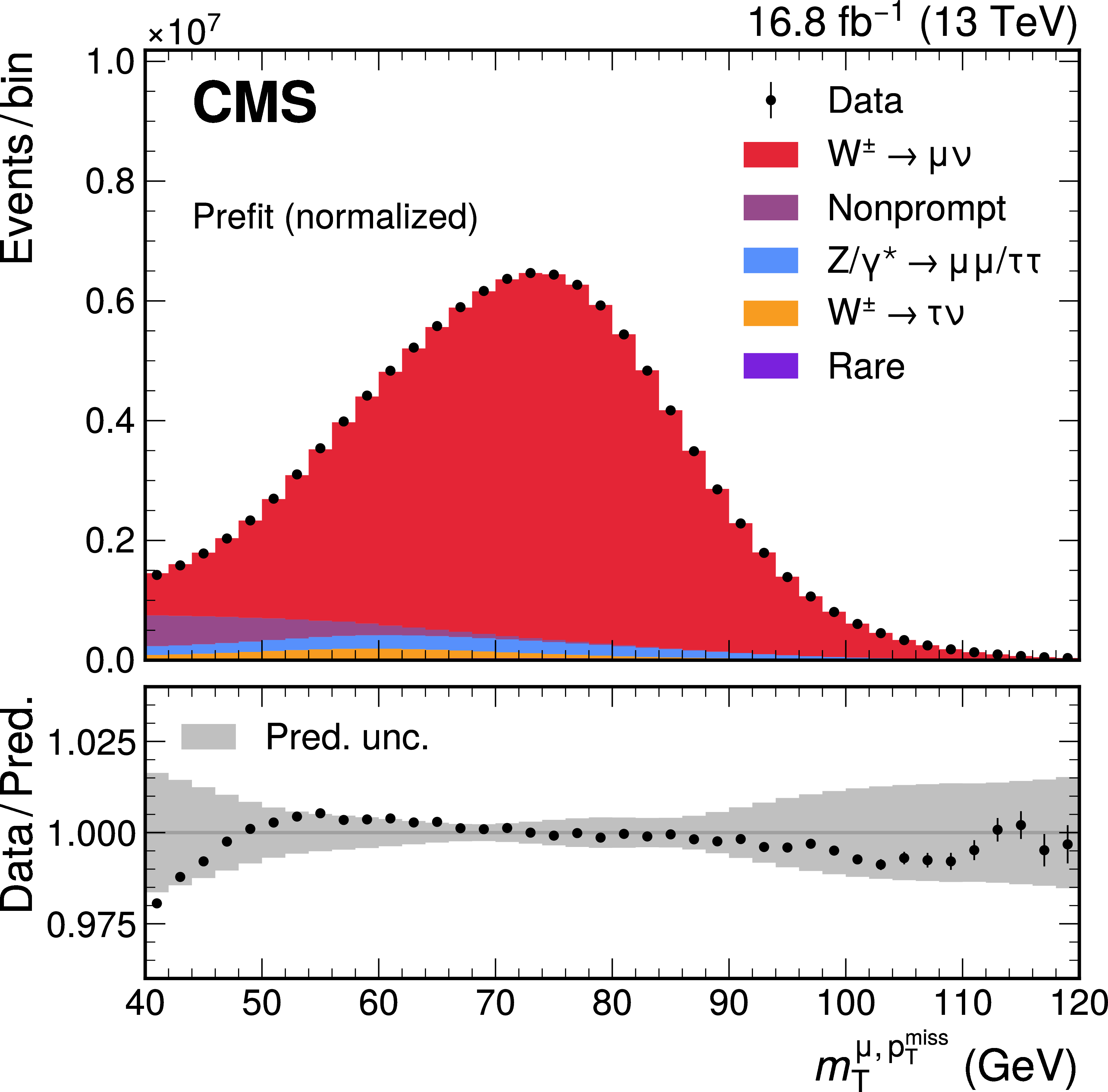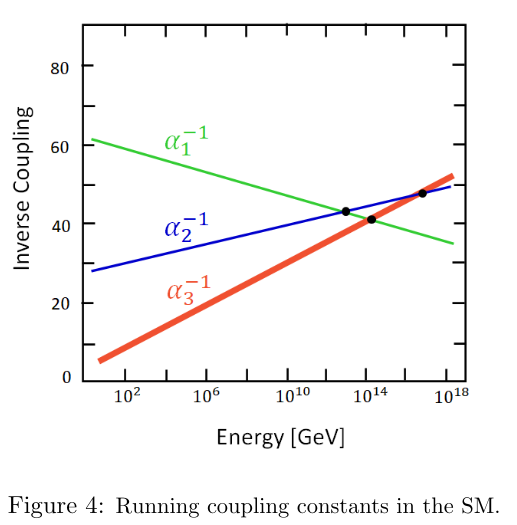 The Higgs Boson and its Physics | an Overview, Sreerup Raychaudhuri arXiv:2304.07559
The Higgs Boson and its Physics | an Overview, Sreerup Raychaudhuri arXiv:2304.07559Dec 5th, 2024
S.J.Watts, L.Crow
In recent years generative artificial intelligence has been used to create data to support science analysis. For example, Generative Adversarial Networks (GANs) have been trained using Monte Carlo simulated input and then used to generate data for the same problem. This has the advantage that a GAN creates data in a significantly reduced computing time. N training events for a GAN can result in GN generated events with the gain factor, G, being more than one. This appears to violate the principle that one cannot get information for free. This is not the only way to amplify data so this process will be referred to as data amplification which is studied using information theoretic concepts. It is shown that a gain of greater than one is possible whilst keeping the information content of the data unchanged. This leads to a mathematical bound which only depends on the number of generated and training events. This study determines conditions on both the underlying and reconstructed probability distributions to ensure this bound. In particular, the resolution of variables in amplified data is not improved by the process but the increase in sample size can still improve statistical significance. The bound is confirmed using computer simulation and analysis of GAN generated data from the literature.
CMS-MUO-24-001
"Soft" muons with a transverse momentum below 10 GeV are featured in many processes studied by the CMS experiment, such as decays of heavy-flavor hadrons or rare tau lepton decays. Maximizing the selection efficiency for these muons, while simultaneously suppressing backgrounds from long-lived light-flavor hadron decays, is therefore important for the success of the CMS physics program. Multivariate techniques have been shown to deliver better muon identification performance than traditional selection techniques. To take full advantage of the large data set currently being collected during Run 3 of the CERN LHC, a new multivariate classifier based on a gradient-boosted decision tree has been developed. It offers a significantly improved separation of signal and background muons compared to a similar classifier used for the analysis of the Run 2 data. The performance of the new classifier is evaluated on a data set collected with the CMS detector in 2022 and 2023, corresponding to an integrated luminosity of 62 fb−1.
CMS-MUO-24-001
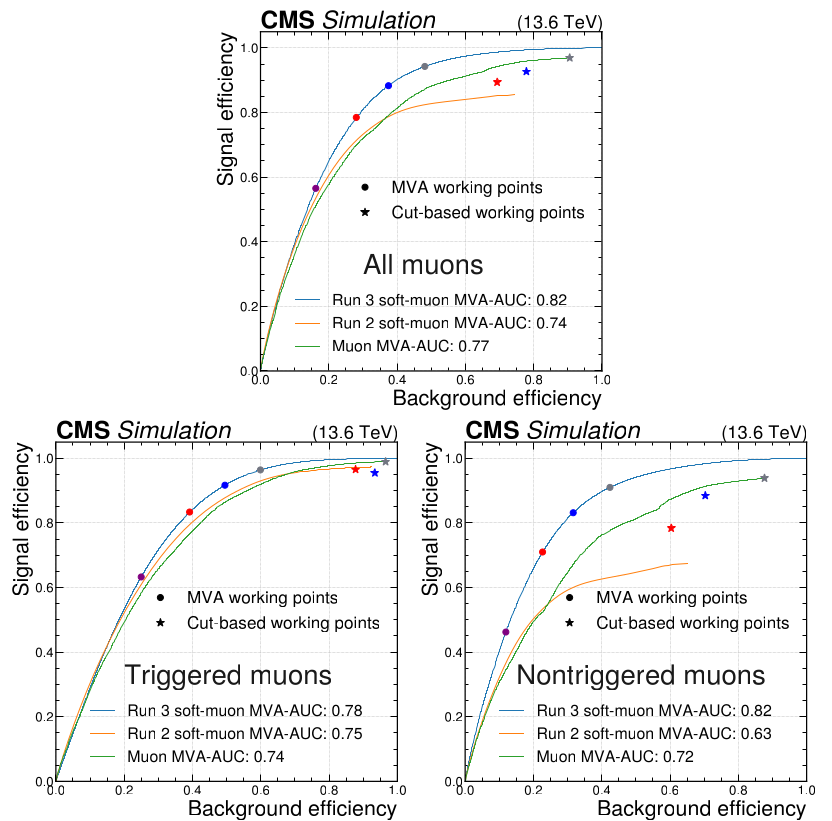
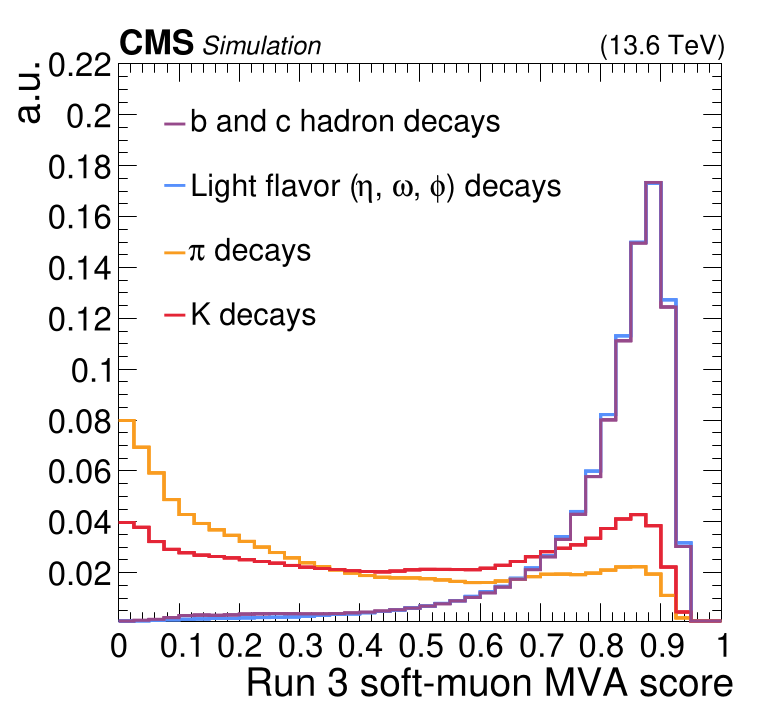
CMS-SMP-24-007
The value of the strong coupling αS is determined in a comprehensive analysis at next-to-next-to-leading order accuracy in quantum chromodynamics. The analysis uses double-differential cross section measurements from the CMS Collaboration at the CERN LHC of inclusive jet production in proton-proton collisions at centre-of-mass energies of 2.76, 7, 8, and 13 TeV, combined with inclusive deep-inelastic data from HERA. The value αS(mZ) = 0.1176+0.0014−0.0016 is obtained at the scale of the Z boson mass. By using the measurements in different intervals of jet transverse momentum, the running of αS is probed for energies between 100 and 1600 GeV.

CMS-SMP-24-007
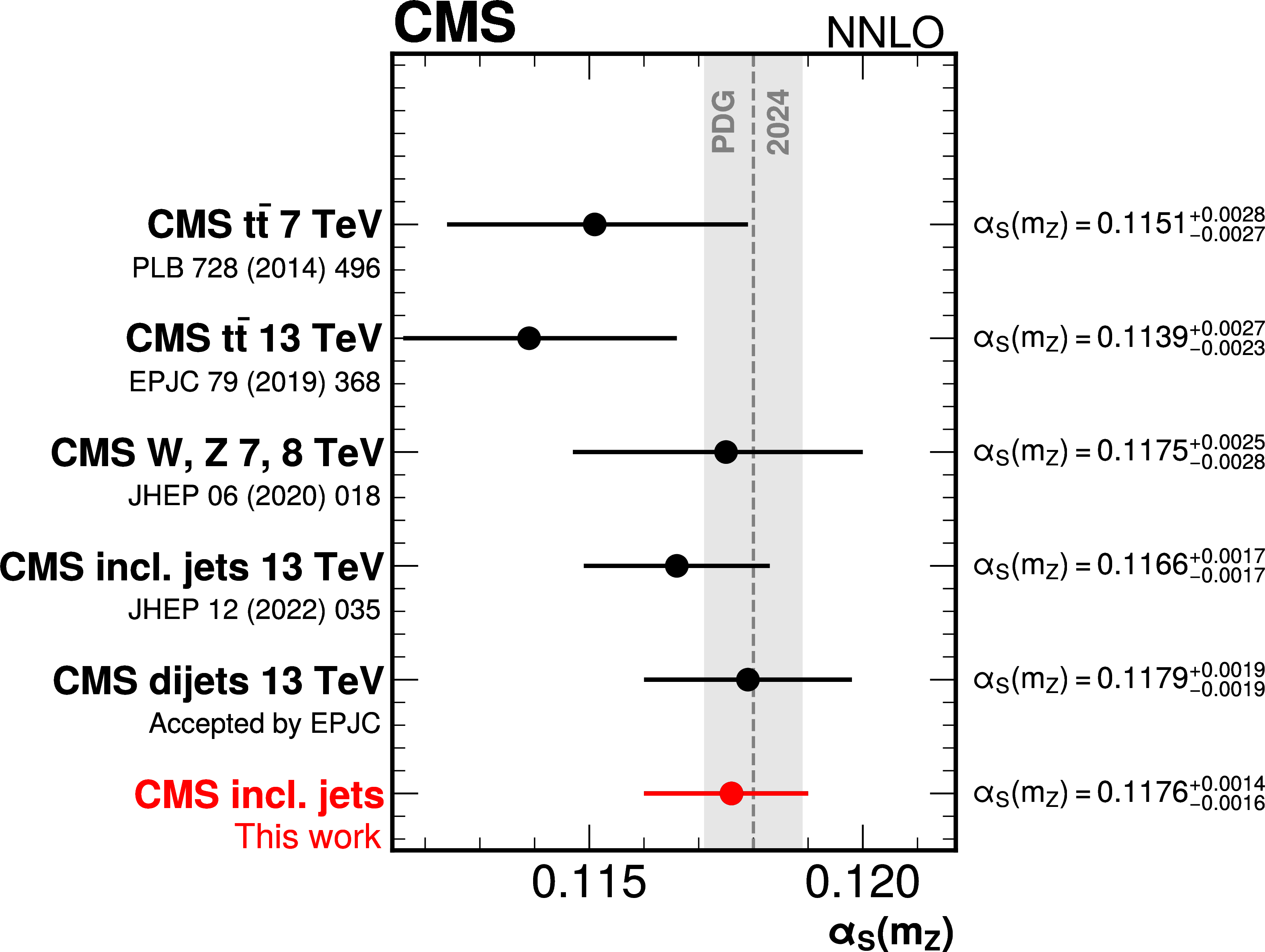
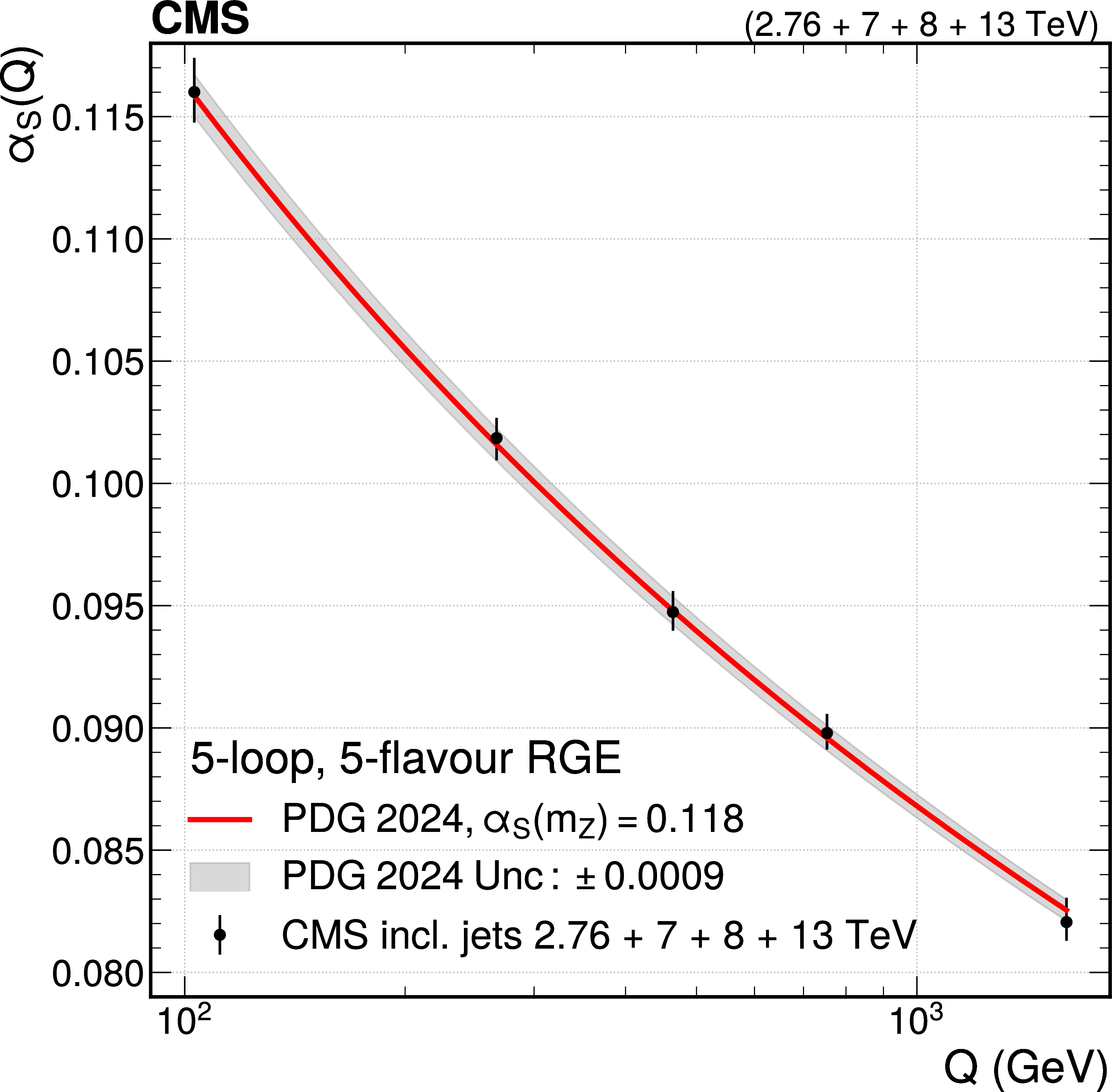
 The Higgs Boson and its Physics | an Overview, Sreerup Raychaudhuri arXiv:2304.07559
The Higgs Boson and its Physics | an Overview, Sreerup Raychaudhuri arXiv:2304.07559
Indicative cartoon-->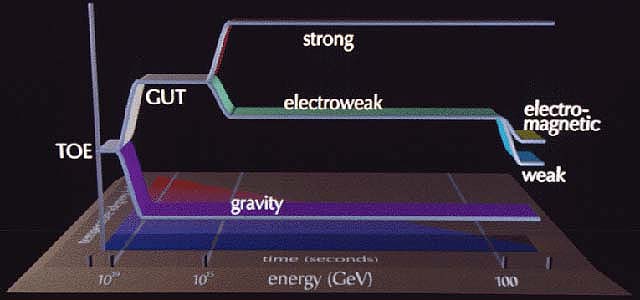
CMS-SMP-24-009
The most precise measurement to date of the W boson hadronic decay branching fraction ratio RWc = B(W → cq)/B(W → qq′) is presented. The measurement is based on a sample of proton-proton collision data from the CERN LHC collected by the CMS experiment at a center-of-mass energy of 13 TeV in 2016-2018 with an integrated luminosity of 138 fb−1. The large cross section of top quark-antiquark production at the LHC offers a sizable high-purity sample of W bosons suitable for this measurement. Events with one charged lepton (electron or muon) and at least four jets, two tagged as bottom quark jets, are analyzed. Charm jets are tagged using the presence of a muon inside the jet. The result, RWc = 0.489 ± 0.020, is consistent with the standard model prediction and is twice as precise as the current world-average value.
CMS-SMP-24-009
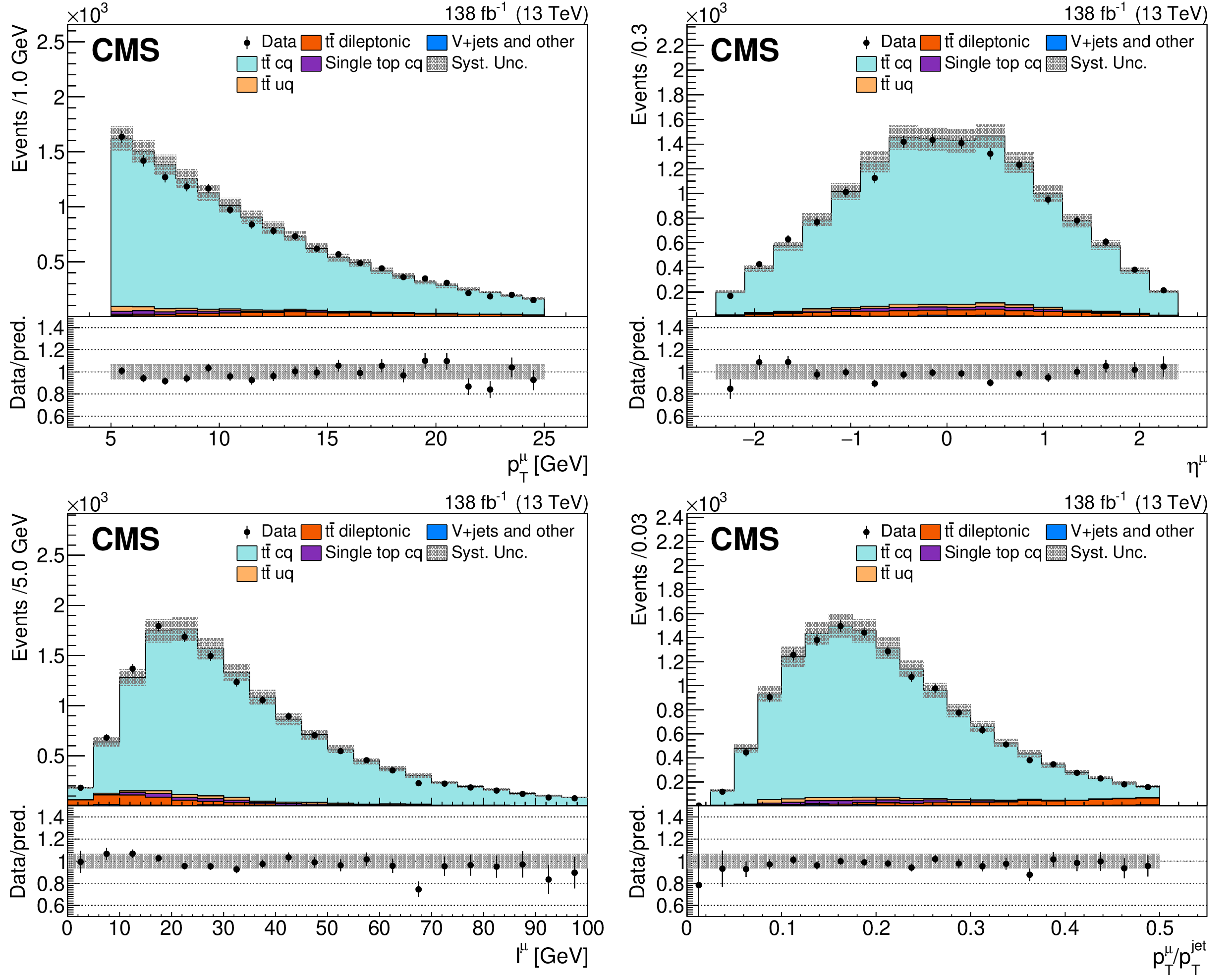
CMS-SMP-24-009
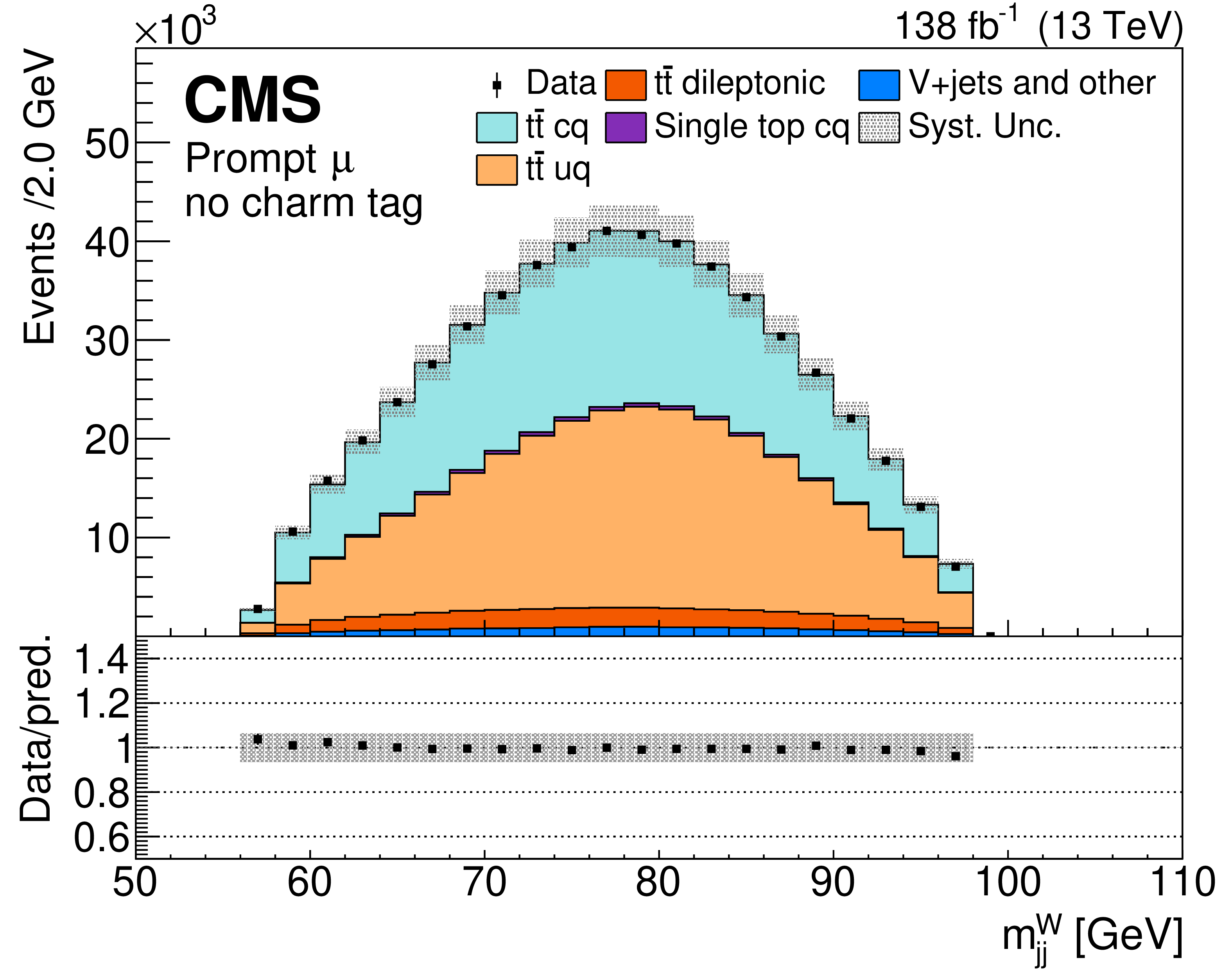
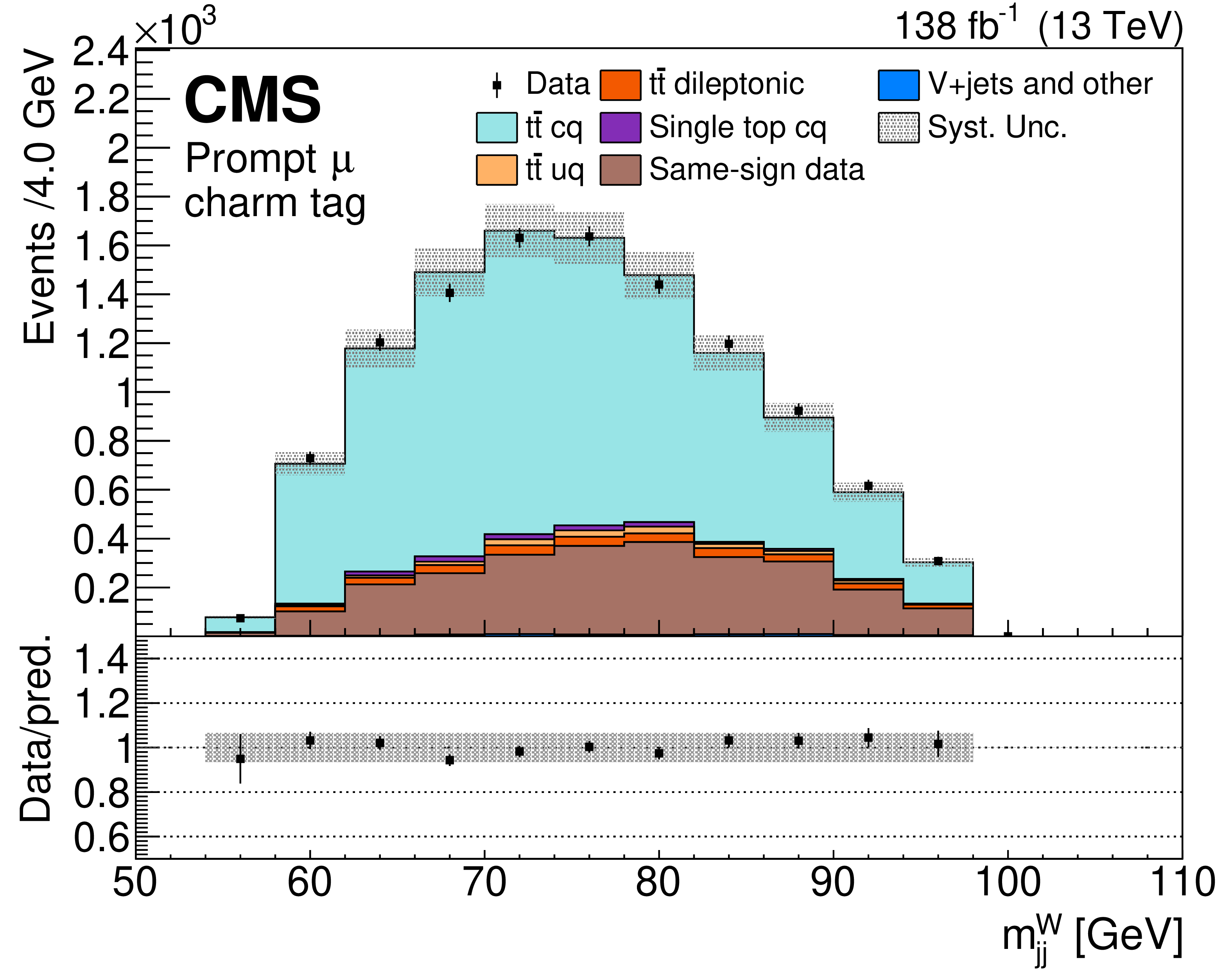
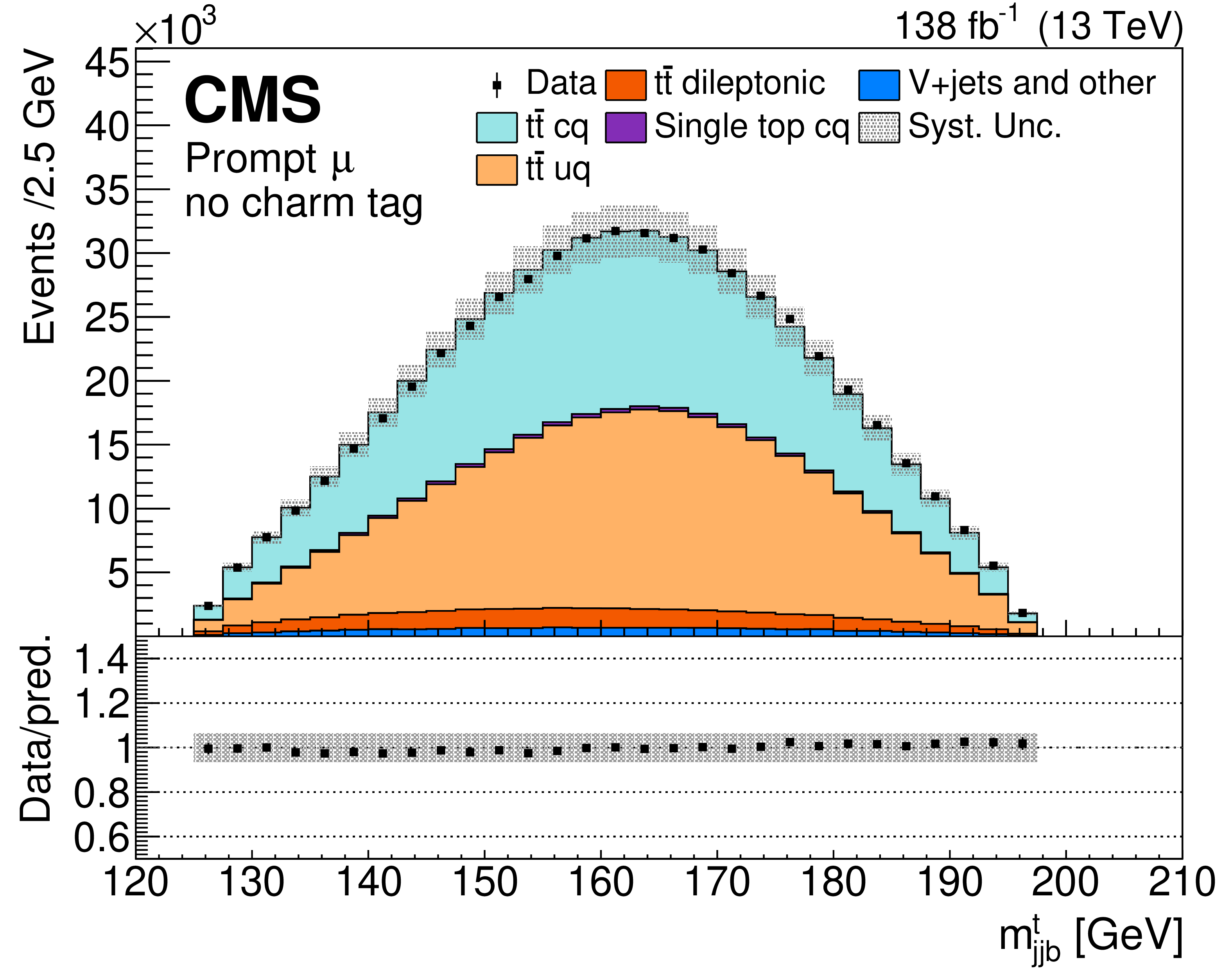
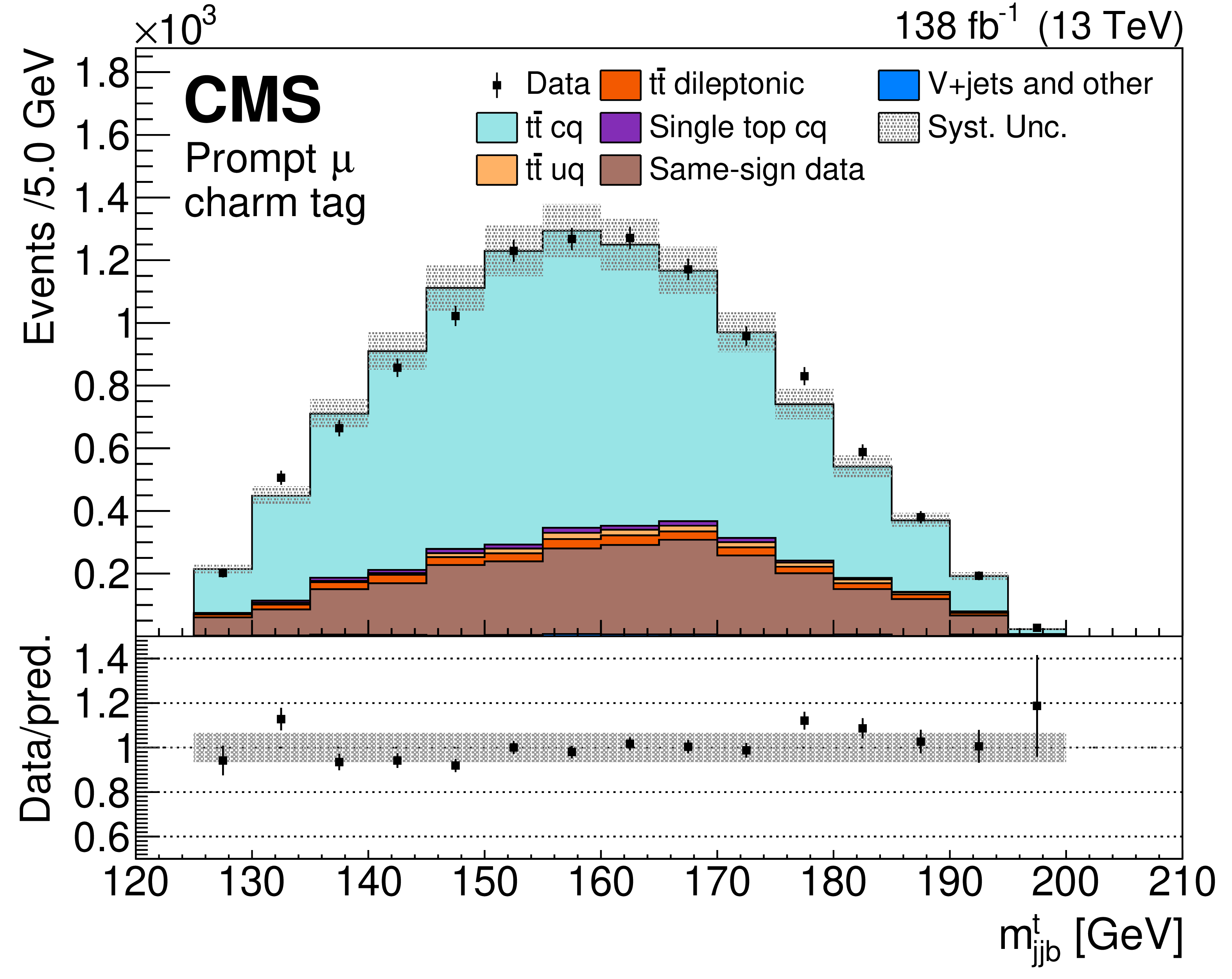
ATLAS Collab
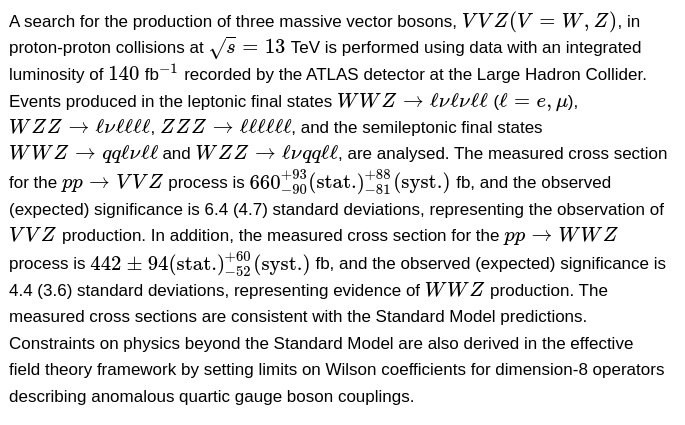

CMS-SMP-23-002
In the standard model of particle physics, the masses of the carriers of the weak interaction, the W and Z bosons, are uniquely related. Physics beyond the standard model could change this relationship through the effects of quantum loops of virtual particles, thus making it of great importance to measure these masses with the highest possible precision. Although the mass of the Z boson is known to the remarkable precision of 22 parts per million (2.0 MeV), the W boson mass is known much less precisely, given the difficulty of the measurement. A global fit to electroweak data, used to predict the W boson mass in the standard model, yields an uncertainty of 6 MeV. Reaching a comparable experimental precision would be a sensitive and fundamental test of the standard model. Furthermore, a precision measurement of the W boson mass performed by the CDF Collaboration at the Fermilab Tevatron has challenged the standard model by significantly disagreeing with the prediction of the global electroweak fit and the average of other mW measurements. We report the first W boson mass measurement by the CMS Collaboration at the CERN LHC, based on a data sample collected in 2016 at the proton-proton collision energy of 13 TeV. The W boson mass is measured using a large sample of W→μν events via a highly granular binned maximum likelihood fit to the kinematic properties of the muons produced in the W+ and W− boson decays. The significant in situ constraints of theoretical inputs and their corresponding uncertainties, together with an accurate determination of the experimental effects, lead to a precise W boson mass measurement, mW= 80360.2 ± 9.9 MeV, in agreement with the standard model prediction.
CMS-SMP-23-002
